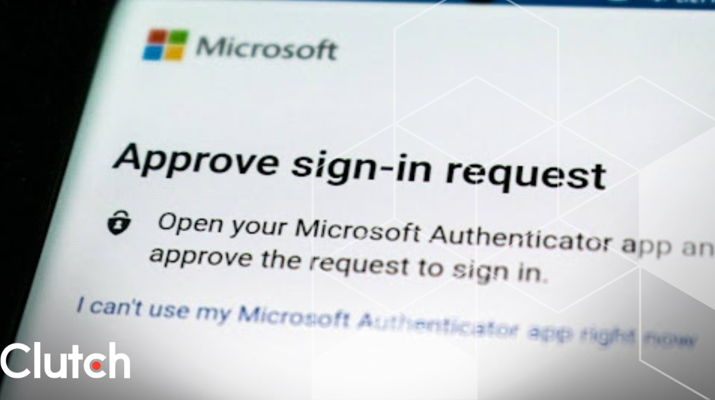

Updated December 19, 2024

Clutch interviewed representatives from more than 15 leading mobile application development companies to determine the key drivers of cost in building a mobile app.
Looking for a Mobile App Development agency?
Compare our list of top Mobile App Development companies near you
Read the full interviews and more insights from Clutch's research on the App Development resources page.
Building a mobile app requires a significant monetary investment. The cost of a mobile app can vary widely depending on the individual app's requirements and complexity, as well as the type of development partner or tool you utilize to build the app. In Clutch's interviews with some of the top mobile app development firms, the most frequently cited variables of cost included:
Learn more about each of these factors below.
The type and number of platforms you choose for your mobile app will be dictated by a number of factors, including the necessary app functions, budget, desired quality of user experience, and the type and size of audience you wish to reach. Some platform options are innately more expensive than others. In most cases, developing, updating and maintaining multiple versions of a native app is more costly than that of a cross-platform mobile Web app or hybrid app.
Learn more about the pros and cons of native, mobile Web, and hybrid platforms.
"Platform choice is another cost consideration. In the case of native apps, if the client wants two platforms, that means iPhone and Android. In that case, there is not one team. The two teams will be working separately, so your cost is double. If it’s hybrid, that means only one team is working and, at the same time, you’re getting an iPhone and Android, so you’re getting double for a lesser cost."
— Manish Jain, Co-founder, Konstant Infosolutions
“The biggest driver is [whether], it is cross-platform or not. Are you doing an iOS and Android application or just one of the two? Some are easier to go cross-platform than others. For example, I would point to our experiential apps, for instance the Disney storybook apps that we make. Two recent ones that are doing well in the store right now are Frozen Storybook Deluxe and Disney Princess Palace Pets. These are fun, animated, light activity and game applications. They are not your standard kind of universal interface kit experience. These experiential apps are actually cheaper than most to go cross platform because we can use certain tools and platforms in the development of those. The most commercially accepted way to do it right now is a platform called Unity. We have our own platform as well, PlanetX, that allows you to go across platforms a lot more easily.”
— Gavin Fraser, CEO, Small Planet Digital
Another key driver of app cost is the size of the app, or the number of features and screens involved. It also becomes more expensive when those features are relatively complex or involve unknowns, such as a new type of technology.
“The biggest cost driver is the features. The complexity of the app, how many buttons, how many fields, how many screens, the amount of logic required, that's 60 percent to 80 percent or more of the cost of the app.”
— Paul Fruia, VP Engineering, Softeq
“The number one driver would be the functionality you're putting into it. How many screens do you have? How many states do those screens have? What are the algorithms and calculations are going into those screens?”
— Stephen Fluin, Chief Strategy and Innovation Officer, MentorMate
“Unknowns can come from difficult to explore things like iBeacons or innovations with wearables, or things that aren't fully documented or out in the world yet. I can't say that those necessarily increase the scope of a project, but they can be an indicator of something that could become a problem later.”
— Adrian Dawson-Becker, Mobile Strategist, Myriad Mobile
“A good example [of a potentially expensive feature] is any type of payment processing on an iOS app, outside the in-app payment process. If you need to integrate the ability for someone to enter a credit card, set up a recurring payment, or anything like that, you’re talking about a major addition of time and money to build that out.”
— Thadd Selden, CTO, Worry Free Labs
“Not all features are created equal. I think one of the most expensive features that people often request, and don’t really understand the complexity behind, in addition to payment processing, are notifications that need to be handled or pushed to the device. So, sometimes, the more complex the feature, the more that can drive the cost.”
— David Issa, Chief Experience Officer, Worry Free Labs
Most apps are not simply stored on a device to interact solely with the user and the device. App features often pull data from or interact with Web-based APIs. For example, a PayPal payment within the app will interact with the PayPal API to verify the payment without the user having to leave the app. API integration can be rather costly depending on the complexity of the API that needs to be developed, or if the necessary API already exists, what the permissions are and how clear and up-to-date the documentation is.
“Any kind of application programming interface or online platform integration is going to drive up cost, for example, an application that has to talk to proprietary APIs that have either been developed by the client or are non-publicly published APIs. For instance, Zillow.com has an API behind a developer agreement. In this case, you may not know what you’re getting into until you agree to the Zillow.com developer terms of service. You have to apply to use it, so it’s considered by us to be somewhat of a proprietary API. In those instances, cost will go up because it’s a very highly specialized development effort. Any time you’re syncing data that’s not on the device, you basically have to work through API constraints to see what you’re allowed to do, when you’re allowed to do it, and how often you’re allowed to do it. Then, you must make sure that the content is truly in sync, and make sure that the most recent content is where it needs to be. In those instances, that’s the most cost hit you’re going to experience.”
— Don Bora, Principal in Technology, Eight Bit Studios
“The application may work independently, for example, if I had an app with a book for users to read. It would be the application without any kind of back-end. There's no logging in or anything like that. It very much simplifies the process because there are no backend developers, PHP for example, or any other technology developers would be required. When there are so many interconnections, more things need to be done. Everything needs to be verified and to be checked for different use cases, and you must figure out how the errors are going to be handled. All of that would be a separate, large part of any application that works with servers. Locally stored mobile apps are usually much simpler but, at the same time, it very much depends on the functionality. If there are a bunch of things inside, then it might be the similarly expensive or even more.”
— Valerie Verveda, Project Manager, Intersog
Enterprise APIs
The cost of enterprise apps that require access to proprietary APIs is particularly difficult to estimate. The clarity, detail, and recency of API documentation vary widely.
“[The cost of access to enterprise data] is generally pretty nebulous until we get into the project and start looking at what existing legacy systems we have to integrate with. Much of the time what happens is that we'll either have to wait for an internal resource from our client's side to develop something on their end, and go back and forth with them, testing and debugging the interfaces to make sure they're working properly, or we'll end up having to develop them ourselves because they're not capable. Sometimes, we know ahead of time what's involved, and we build that cost in.”
— Paul Fruia, VP Engineering, Softeq
“One driver is that a lot of times companies will come to us with a database and an application programming interface, and they want to see that injected into a native application so they can carry it with them. In some of these cases, there's little to no documentation on the APIs that these companies have. That really drives up a lot of frustration, time, and money with the application simply because it's similar to flying blind, not knowing where you're going, not certain of all the results you're going to get, given certain input. I would have to put that one on there, toward the top of that list [of cost drivers].”
— Sam Stutsman, Android Software Engineer, Myriad Mobile
App Administration
Any app that requires a backend to manage the app, such as to push new content to the app or to manage users, will be more costly as the complexity of that backend increases.
“The amount of infrastructure and app administration required also affects the cost. For a business app that is designed to display information on the app linked to their website, there will be less new infrastructure required because they already have their website and their mobile app was just an add-on to their business. There are different scenarios like when a social networking app or an app that is an independent service like taxi booking or a food ordering app, where you need to app administration to manage day-to-day activity and all the different activities are through the app like push notifications, for example. If you had food ordering and you wanted to push special offers or you want to put a special discount on your app, you need to have an app administration panel, so we provide a back-end system for that with all these features.”
— Manish Jain, Director, Konstant Infosolutions
“The amount of back-end infrastructure you need is a cost driver. There are virtually no apps that exist in a vacuum. Almost all are interacting with a Web service API of some kind, and usually that’s going to be developed in conjunction with the app. Some Web services are as simple as providing an administrative back-end for the app owners to do things like help you reset your password or things like that. Others are the other end of the spectrum, where you’re providing a full web app that gives you some of the same functionality of your native app, so that they can still interact with it off device, or from another place. So, the scope of that, the size of that API, and the number of communications that need to go back and forth, can be a major driver of cost.”
— Thadd Selden, CTO, Worry Free Labs
There are also different levels of design quality you can receive depending on the budget you’re willing to invest in your app. The visual design elements can be highly detailed and customized to your brand, which is more costly than using a ready-made or minimalistic design. Hiring a service provider with proven visual design skills and creativity may be more costly. Often, the design quality provided by a service provider closer to market is more in tune with the client’s brand and consumer tastes in that market.
“[Another factor is] how custom you want your app. Our business is based around clients who typically want a very custom experience, clients like the NCAA, HBO, the NBA, ValPak, and so on. Those are all the types of clients for which it’s really important to their business that the apps are unique and are part of their brand positioning, and they don’t look like cookie-cutter apps that use Apple or Android’s out of the box building blocks.”
— Tobias Dengel, CEO, WillowTree, Inc.
When developing a mobile app, one of the first things you should determine is your budget, along with an assessment of your priorities in terms of the desired platforms, functions, and qualities of the app. Learn more about cost ranges in Clutch's quantitative survey on the cost to build an iPhone app.
Start the conversation. Share this article about the key drivers of mobile app development cost.


